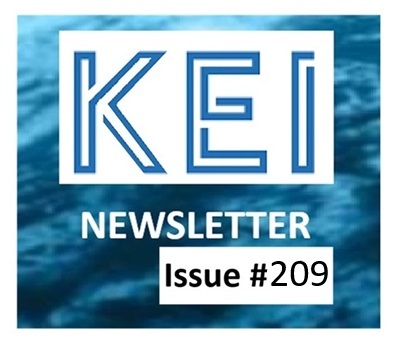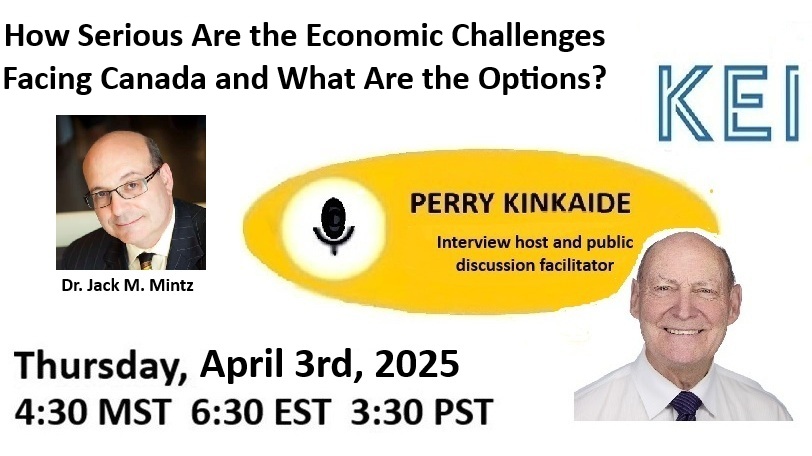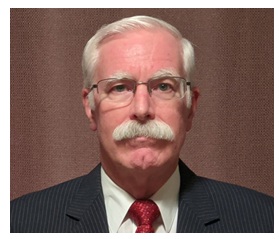|
Fortress North America: The Canadian Dilemna in an Era of Economic Statecraft |
DIRECTORY | ||
|
Contributions: Canada Sovereignty Under Siege - webinar recording HERE |
Action: Help sustain KEI's contributions |
Fact or Fiction?
The Rich Should Pay More HERE |
|
|
Editor - Perry Kinkaide |
US tariffs come into effect on "Liberation Day" - April 2nd. What to expect is of interest world-wide given the US economic clout and it's huge consumer market. As for the US consumer, 72% don't expect tariffs to make the US economy better. Most analysts agree - the US consumer will bear the brunt of tariffs. The pain of retaliatory measures makes the pain even worse. Is the US transition from taxes to increased reliance on tariff revenues rational? Will the US consumer as a voter tolerate the transition? Can the US otherwise whether its's debt - now estimated at $37 trilion, growing at the rate of $2T/year, and bearing $Bs in interest? What are the implications for Canada; has Carney soothed over the President: earning an endorsement or the kiss of death? - Editor |
||
|
Fortress North America: The Canadian Dilemma in an Era of Economic Statecraft or Canada On the Brink: Can It Be Saved? As the United States hardens its economic borders under the Trump Doctrine, Canada finds itself pulled into a new continental alignment: a proposed “Fortress North America.” While softer than the exclusionary ring of “Fortress America,” the implications remain stark. Economic interdependence, security realignment, and political sovereignty are on a collision course. When the United States reaches for its economic arsenal of tariffs, the reverberations are swift and far-reaching—none more so than for its northern neighbor. In the shadow of Trump-era economic statecraft, Canada is being squeezed between its largest trading partner’s protectionist instincts and its own pursuit of national autonomy. The U.S. pivot toward a fortified, tariff-reinforced trade posture—what insiders now call Fortress North America—is altering the fundamental architecture of Canadian economic diplomacy. This emerging doctrine is not simply an extension of past trade disputes. Rather, it’s a wholesale reordering of Canada’s strategic options, with implications extending beyond tariffs into military obligations, currency stability, and political identity. Statecraft as Strategy: The New U.S. Imperative. The Trump administration has embraced tariffs not as tactical measures but as instruments of national strategy. Under the banner of “economic statecraft,” Washington is recalibrating global trade—chiefly to counter China—and expecting its continental allies to fall in line. The implications are clear: Canada is being asked to participate in a tariff regime against China, reinforce border security, and dramatically increase defense spending. In short, to become an active partner in a securitized North American bloc. For Canada, the dilemma is existential. Participation may buy temporary relief—but at what cost to independence? - continued below
No Need to Register - Just Zoom in https://us02web.zoom.us/j/84258596166?pw.. Dr. Jack M. Mintz is the President’s Fellow of the School of Public Policy at the University of Calgary after serving as the Palmer Chair and founding Director from January 1, 2008, to June 30, 2015 Dr. Mintz is currently chair of Alberta Advanced Education panel on “Post-Secondary Education Funding and Avlerta’s competitiveness.” He is a board member of Mackenzie Health, York Region, Ontario, Canada West Foundation and the Aristotle Foundation for Public Policy. Dr. Mintz is also a Distinguished Senior Fellow, MacDonald-Laurier Institute, Senior Fellow at the C.D. Howe Institute, and research fellow at International Tax and Investment Centre in Washington D.C., CESIfo Germany and Oxford’s Centre of Business Taxation. He is weekly contributor to the Financial Post of Canada. Dr. Mintz became a member of the Order of Canada in 2015 as well as receiving the Queen Elizabeth Diamond Jubilee Medal in 2012 for service to the Canadian tax policy community and Queen Elizabeth Platinum Medal in 2023 for serving as chair of the Alberta Premier’s Economic Recovery Council from 2020 to 2022. Continued from above Tariff Turbulence: Steel, Aluminum, and What Comes Next. The recent imposition of 25% tariffs on Canadian steel and aluminum, signaled more than economic muscle-flexing—it marks a structural shift. Investigations into potential tariffs on copper and lumber suggest a widening net, with Canada’s core exports under threat. The asymmetry is glaring. Canadian exports to the U.S. represent nearly a quarter of its GDP. U.S. exports to Canada? Just over 1.5% of American GDP. In this lopsided arrangement, Canada’s retaliatory tariffs—currently aimed at $21 billion in U.S. goods—are symbolically potent but economically modest. Ottawa’s Political Crossroads: Carney’s Calculus. With Mark Carney installed as Trump's continuing rhetoric has been firm, hinting at strategic overtures toward Europe and multilateral defense coordination. But with federal elections set for April 28, Carney’s posture may reflect electoral urgency as much as long-term policy. The risk: provoking U.S. ire while lacking the leverage to truly pivot away. Currency and Confidence: A Nation on Edge. The Bank of Canada’s recent rate cut —from 3.00% to 2.75%—underscores the economic fragility. With investment jittery and consumer confidence fraying, policymakers are in damage control. Currency traders are watching closely. The Canadian dollar has shown sharp volatility, and the USD/CAD rate now flirts with the 1.46 mark. Should a full spectrum of U.S. tariffs come into force, analysts predict levels as high as 1.53—an ominous signal for importers and inflation-watchers alike. Strategic Fork in the Road: To Align or Not to Align? Canada’s path narrows to two stark alternatives:
Canada's provinces will be hurt differently, further complicating leadership challenges in healing a severely nation divided on a number of economic measures. According to RaboResearch, the most likely outcome is a patchwork compromise: sector-specific tariff alignments rather than blanket policies. But even compromise carries long-term implications for the nation’s autonomy and policy freedom. The Narrowing Circle. Canada is at a crossroads, where tradition, proximity, and pragmatism must be weighed against principle. Fortress North America is not merely a tariff framework—it is a test of national character. Will Canada accept its role as junior partner in a securitized hemisphere? Or will it chart a more uncertain, independent path? Will Provinces be united or divided? What is clear: Canada needs leadership to rebuild itself as a nation including it's post-election relationship with Washington, rebuilding it's economy, and establishing its position in the global order. In an age of economic weapons, alliances are being redrawn—not by diplomats, but by trade balances, security budgets, and the political will at all levels to resist gravity. ALSO - Thank you David Redman
Canada 2024: A Confident Resilient Nation or a Fearful Fractured Country? HERE A discussion of the socio-political forces shaping Canada, criticizing the concept of a "post-national state" and stressing the need for national unity and clear policy objectives. Redman warns against minor issues overshadowing critical national concerns and calls for fostering national pride to secure Canada's future. The paper identifies six defining national interests for Canada, including national unity. The other five interests are resilience, a shared vision for the country's future, respect for diverse opinions while maintaining a cohesive national identity, fostering an environment of pride in Canada's achievements, and a strong focus on addressing significant national challenges over less critical issues. Breaking Point. National Security and the Canadian Armed Forces HERE Canada stands at a crossroads. Are we prepared to defend our national interests, or are we a nation drifting without direction? LCol David Redman (Ret’d), former head of Emergency Management Alberta and a veteran with extensive operational command experience, presents a critical analysis of Canada’s security posture. Drawing on decades of military and government expertise, Redman examines the challenges facing the Canadian Armed Forces, the erosion of national resilience, and the urgent need to redefine Canada's national interests in an increasingly unstable world. The presentation concludes with the framework of an action plan for saving Canada.
|
|||




